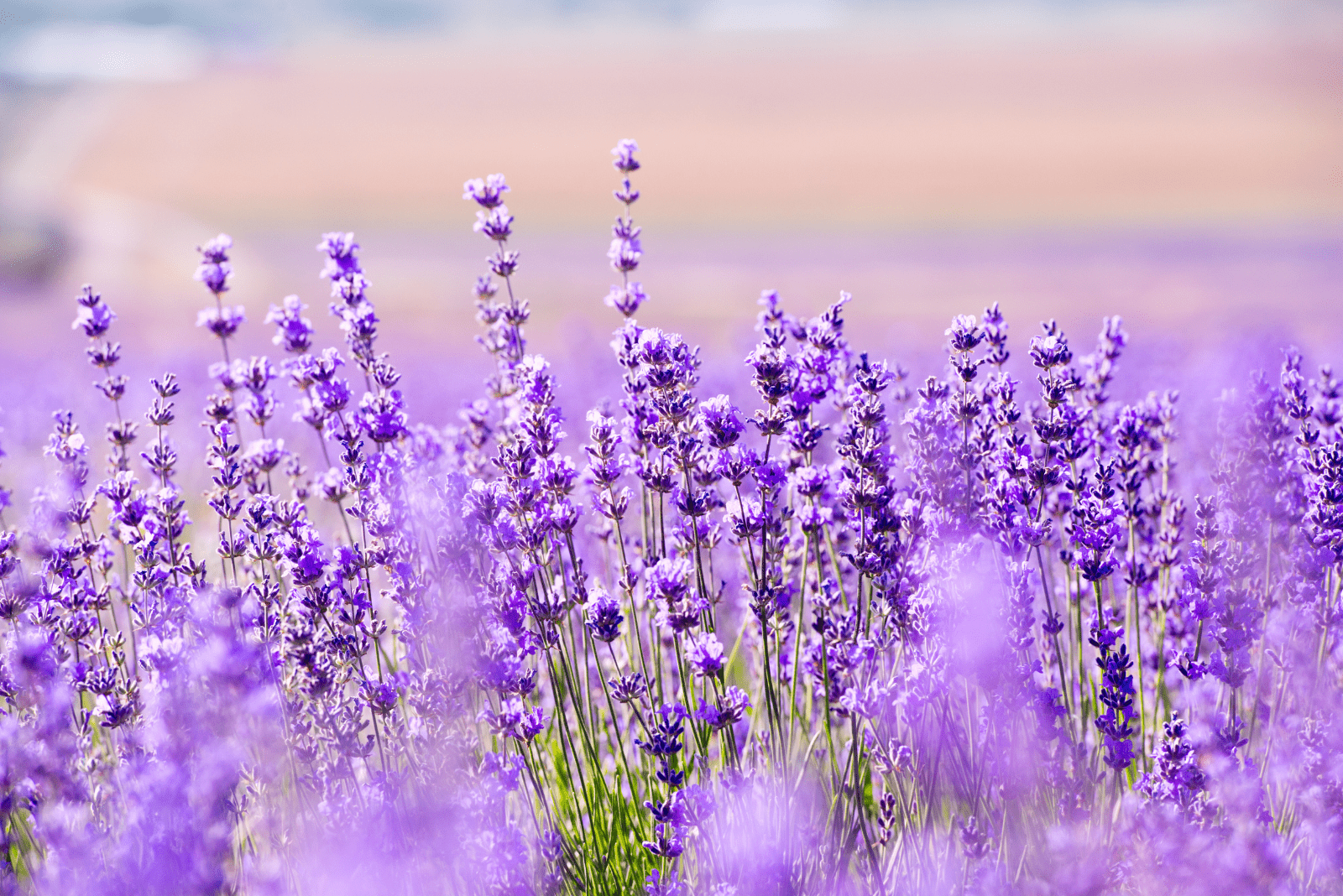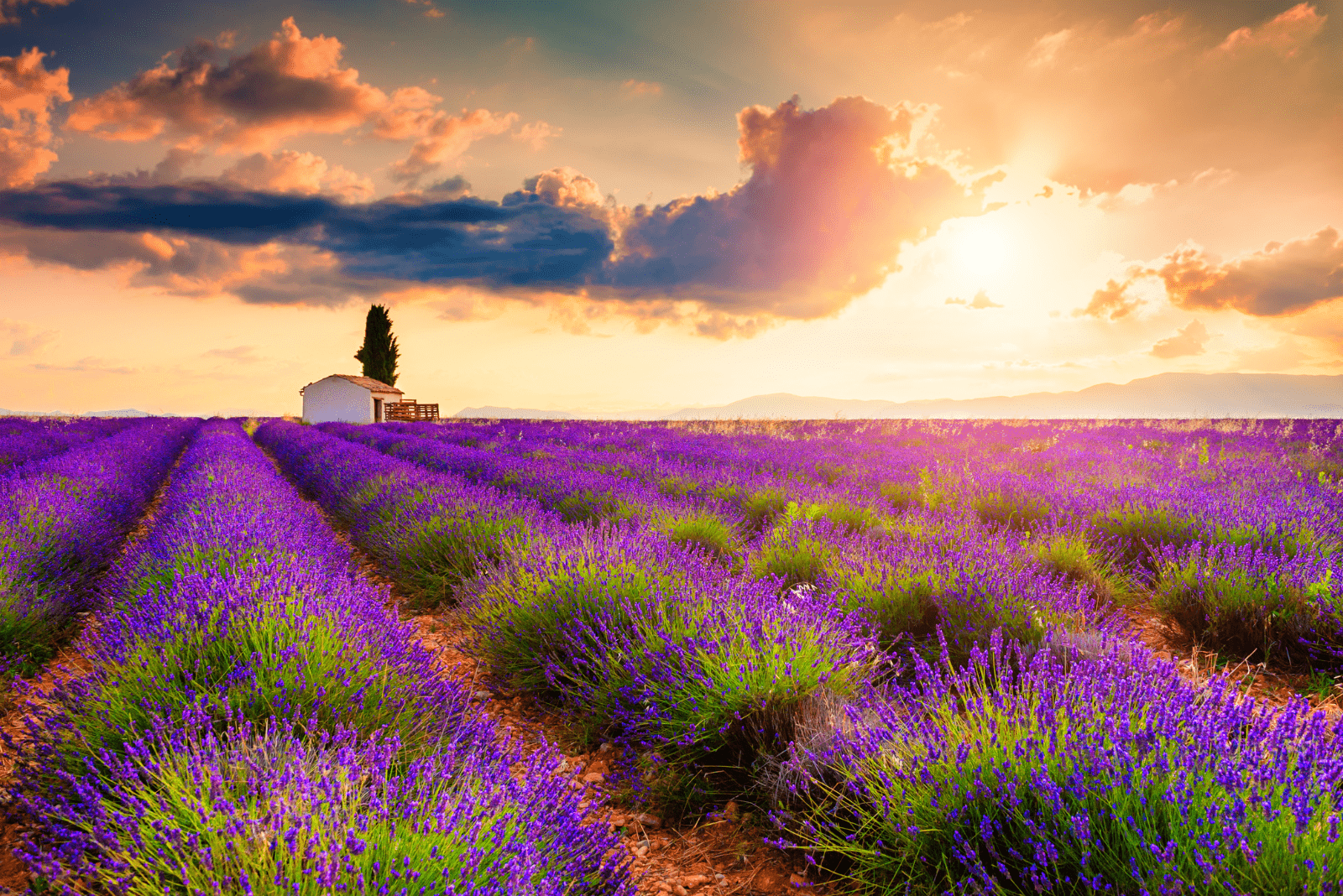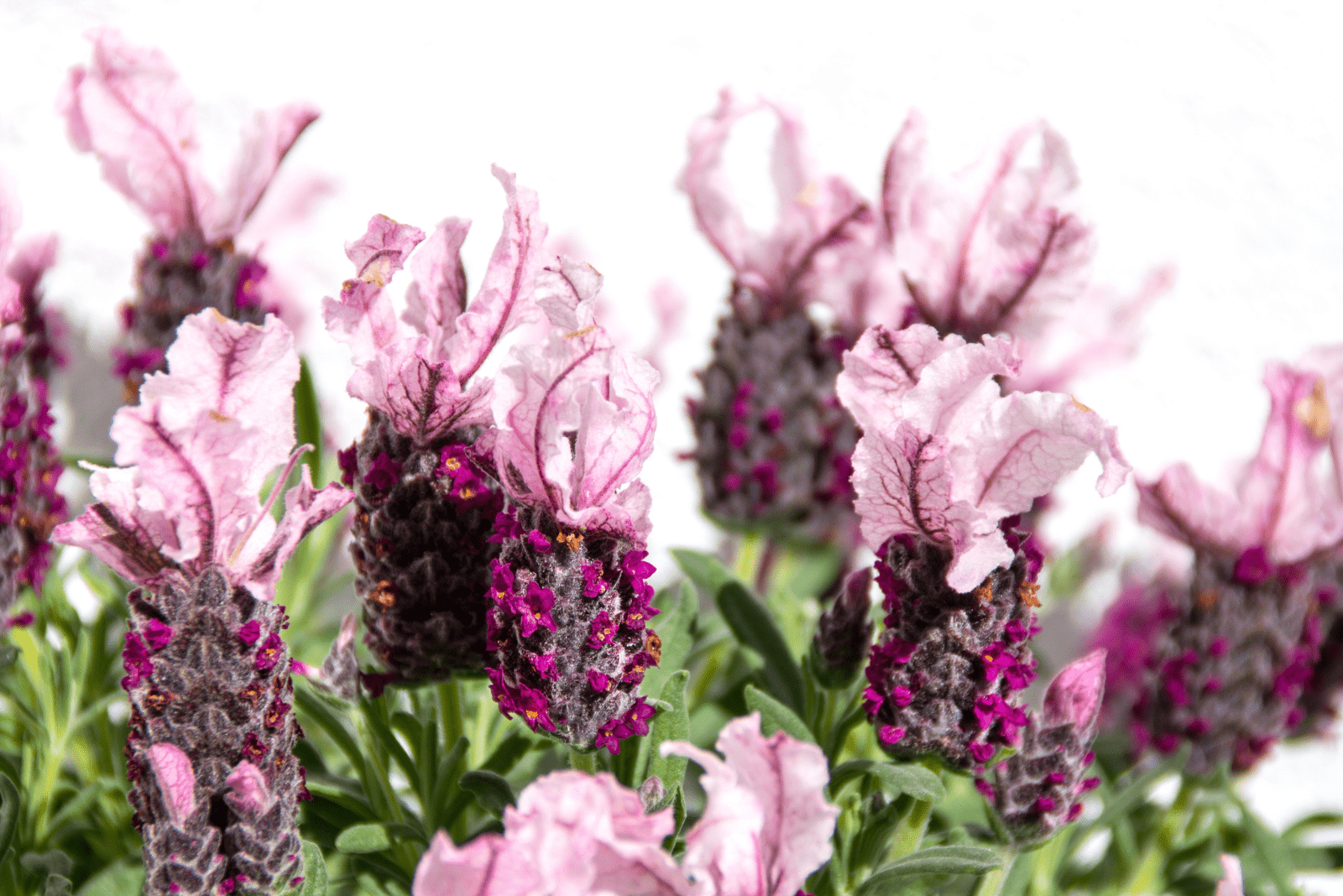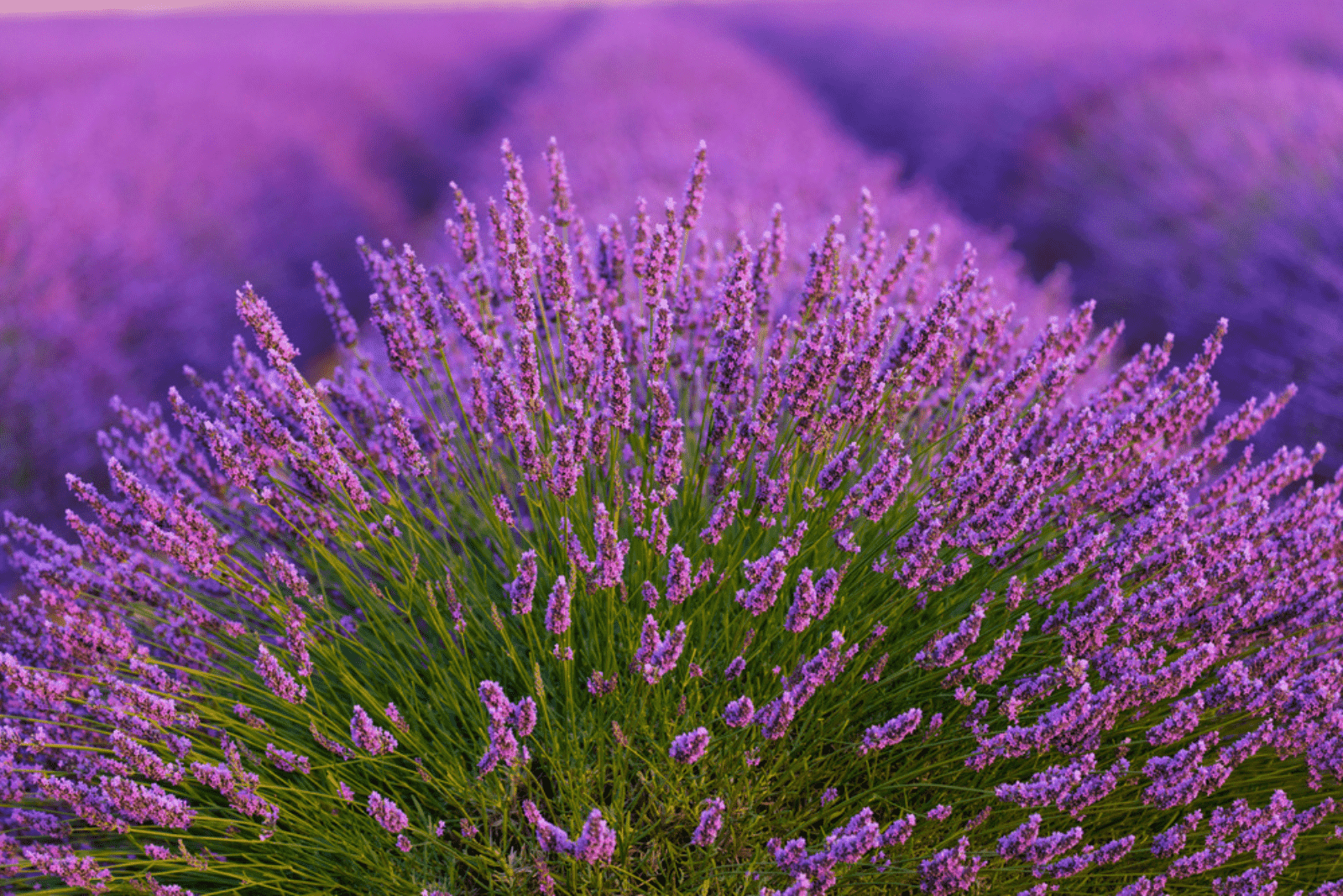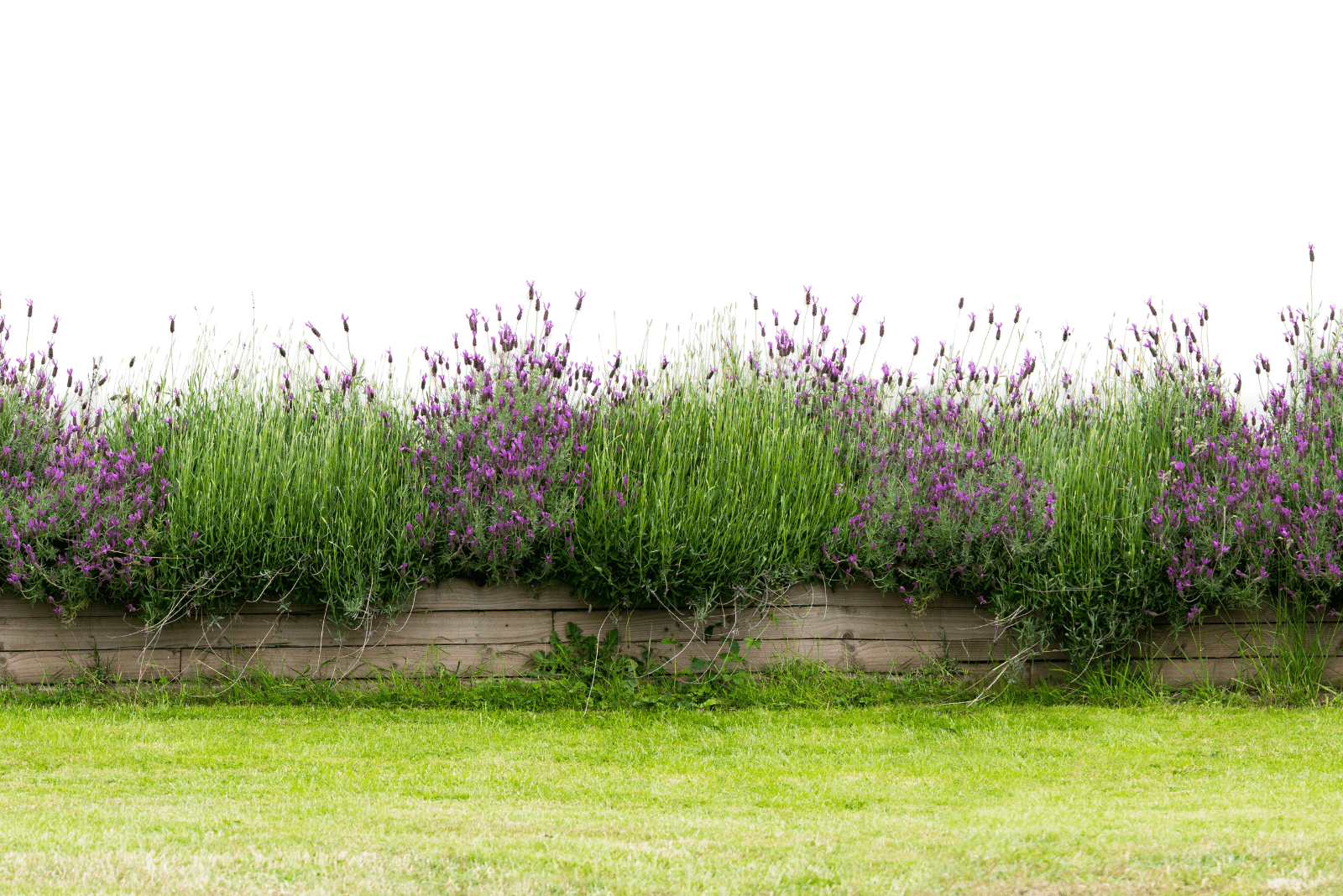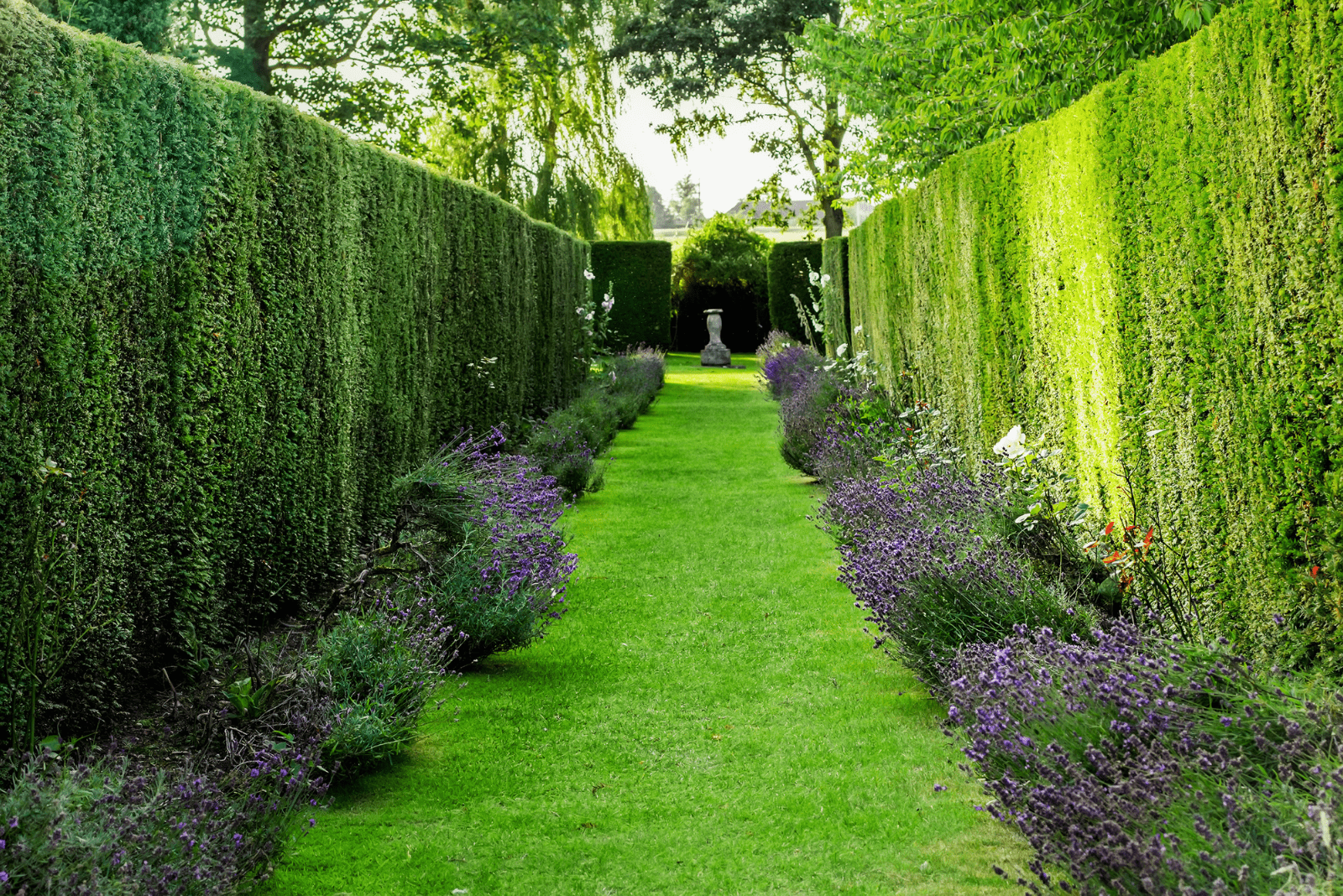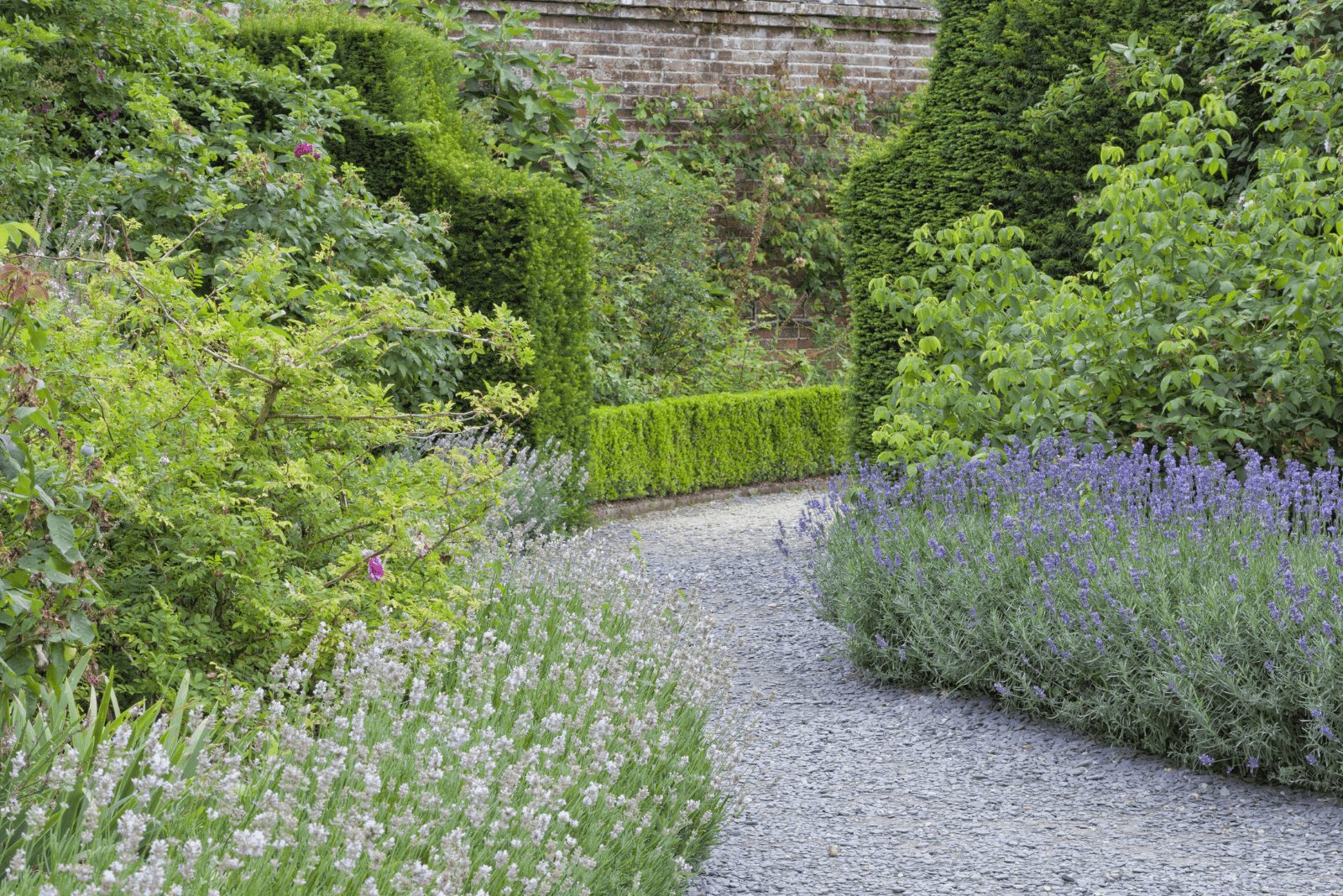Landscape design is quite an important aspect of your garden, and what better way of improving it than planting a lavender hedge to frame your patio or fence your property?
But how to do it? Is it difficult? How long will it last?
These are the questions that we’ll tackle in the following sections so that you can have purple flowers decorating your front yard in no time.
We also decided to talk about all of the benefits of planting lavender hedges, as they’re not just easy on the eyes.
But before we do all of that, let’s learn more about lavender itself:
[table id=269 /]How To Plant A Lavender Hedge?
Growing lavender hedges has always been my passion; they look incredible, smell even better, and even have benefits for the environment and your health.
One thing that was on my mind for quite some time was planting a lavender hedge and, more importantly, the question: “How to do it?”
I found the perfect formula for success, but it includes quite a few things, so bear with me.
I mean, we all want our hedge to look impeccable, so why not do it the right way?
Choose A Suitable Variety
The first thing that will pave the entire process of growing a live hedge is to choose the best lavender variety.
There are many different types of lavender plants, with various requirements and hardiness, which is why it’s crucial to choose the one that best fits your region; growing lavender in Florida differs from cultivating it in arid or freezing climates.
Below, you can read more about some popular lavender hedging plants, learn their requirements, and find the one that you prefer.
English Lavender
English lavender is called Lavandula angustifolia and is a preferred variety among growers all over the world.
This variety is frequently referred to as common lavender and is the best choice for making lavender oil, as it isn’t as fragrant as some other varieties (so the oils are relaxing rather than stimulating).
It is quite hardy and can be grown in USDA zone 5–9. This variety of lavender can effectively tolerate harsh winters and will stay evergreen for many years to come.
There are many cultivars of this shrub that are favored by growers, either due to their color or hardiness.
For instance, lavender Hidcote adorns itself with silver-green foliage and deep violet-blue flowers in early summer.
At the same time, Munstead is clad in a grey-green or even green-purple leaf attire and is crowned with purple flower spikes sometime in spring.
Another popular hedging variety that can take everyone’s breath away is Vera. Its lilac flowers and silver-green leaves capture your gaze and contribute to the overall design.
Munstead usually grows between 12–16 inches, making it the best choice for a low hedge, but Hidcote, with its 18–24 inches, doesn’t fall far behind.
English lavender ‘Vera’ is usually 18–36 inches tall, but you can always trim it and shape it to your preference.
French Lavender
French lavender (Lavandula dentata) isn’t everyone’s first choice for a lavender hedge. This variety isn’t as hardy as some other types and is usually grown in 8–11 hardiness zones.
Therefore, it prefers humid and hot climates, which is why it’s perfect for growing in the southern parts of the US.
It blooms in early spring and usually grows up to 3 feet, so it’s perfect for a live hedge in Georgia and Florida.
The most famous cultivar is the Royal Crown, which doesn’t grow taller than 2 feet and decorates itself with dark green foliage and tiny purple blooms.
Spanish Lavender
Spanish lavender, scientifically known as Lavandula stoechas, is another hardy variety that beautifies a yard year-round.
It thrives in USDA zones 6–11, which makes it ideal for both cooler and warmer climates. You can always learn more about the blooming times of different lavenders, but this particular variety can flower up to three times per year: mid-to-late spring, early or mid-summer, and even early fall.
There are several interesting cultivars of this lavender, and they come in different colors. Regal splendour is a cultivar that is considered to have the deepest shade of purple on the market, and its alluring blossoms can bedeck your walkways from late April onwards.
Ballerina is a completely different variety, and it boasts tiny white crowns that protrude from the silver-grey bush.
Lavandin
Lavandin is a hybrid between English and Portuguese lavender and goes by the name Lavandula x intermedia in the botanic world.
It is slightly less hardy than the English lavender, but it produces larger and more abundant lavender flowers, so we easily forget that slight deviation.
The lavandin hybrid also has the strongest fragrance of all lavenders, which is just one of the reasons why growers choose it. It blooms in mid-to-late summer, and you can harvest the tiny blooms for making potpourris, sachets, etc.
The most popular cultivars are Grosso, Provence, and Phenomenal, and they all bloom at different times throughout the season. Grosso opens its tiny, purple flowers in summer and is slightly less hardy than Phenomenal, but that’s why we Floridians love it.
Provence is the variety with the most potent scent, so it’s no wonder why so many gardeners choose precisely this variety for mass plantings.
Select The Perfect Location
After you have chosen which violet flowers will decorate your garden, you can start selecting the ideal location.
Lavenders require full sun to thrive, so any place with more than 6–8 hours of sunlight is perfect. Of course, it’s better to find a location with plenty of light in the morning and then a bit of shade in the afternoon, so the leaves will be completely safe.
You should also make sure that the garden soil is well-draining, but you can always amend it and make it perfect for your lavenders.
When it comes to choosing the location, don’t forget about the air circulation. Most lavenders don’t do well in highly humid conditions, and if you plant English lavender, for instance, in a humid climate, it will most likely die.
Thankfully, Spanish and French lavender can handle higher humidity levels, so you can plant them instead. However, you should still aim to maintain a certain distance between the plants so their leaves can dry out after any rain.
Prepare The Soil
The next thing is soil preparation. Lavenders thrive in mildly alkaline substrates, so you should always test the growing medium before planting these shrubs. The good news is that there are reliable tests on Amazon, so you can get one whenever you want.
Lavenders can thrive in a variety of different mediums, in sandy and clay soils alike. However, they prefer well-draining mediums, so you should modify heavy substrates with a lot of sand. You can also add bark and other coarse materials to improve drainage and aeration.
Lavenders don’t like fertile soils, so you don’t need to add compost to make the medium more draining.
You should also loosen the soil down to 6–8 inches prior to planting, but thankfully, there are great tillers for breaking new ground that can help you with this.
Forming a raised bed will give your hedge a fuller look and help with drainage, so you can mix some topsoil with just a bit of manure or compost to make a 6-inch tall ridge.
Plant The Lavender
Now we come to the fun part: planting lavender.
Take the plant out of the nursery pot and gently loosen the roots. Rootbound plants have a much harder time establishing, and you might witness their foliage turning yellow, wilting, or even falling off, which is definitely not a pleasant sight.
You want to make sure that they’re spaced so that there’s enough air circulation, which may prevent issues such as botrytis and Septoria leaf spot. Therefore, plant new lavenders at least 10 inches apart, although 1–1.5 feet is ideal.
The next tip will seem weird and contradictory to everything that you know about lavenders, but bear with me. Water the small shrubs thoroughly and continue watering them frequently throughout their first year.
New lavender is still sensitive to dry spells and needs moist soil in order to get stronger and more drought-tolerant.
However, it’s essential not to use too much water, but if you do, there are some signs of overwatered lavenders to look out for, such as yellow or brown leaves, wilting and drooping plants, wet soil and stunted growth, etc.
Finally, mulch your new plants with small rocks or oyster shells, these will keep your plant’s root system nice and cool in the summer heat.
Here are some tips for planting a lavender hedge:
Stagger The Hedge
Instead of planting lavenders next to each other, you can always stagger them and create a more interesting lavender hedge.
You’ll have to do some more work, but it’ll pay off.
Make a wider ridge, approximately two feet wide, and make two lavender rows, 1 foot apart. Plant lavenders in two rows and ensure that each plant appears as if in the middle of the two opposite plants.
Staggering will definitely keep your lavenders happy and will give them a lusher look, not to mention how many people find staggered lavender hedges more appealing.
But in the end, it’s really up to you and your own preferences.
Prune The Lavender
The last tip concerns pruning lavenders. You might not think of it much because these plants can grow quite well without constant trimming, but there are benefits to it.
First of all, your lavenders won’t invade every single corner of your yard.
Secondly, lavenders actually grow faster and produce more blooms when properly pruned. You should cut back lavender in spring when it starts its new growing season and you can see new growth appearing.
However, be careful and don’t cut the woody main stem, as that can cause severe damage to the plant. It is important to do it correctly because pruning can increase airflow and save your plant from too high humidity.
Shape lavender into a dome because this form has been proven to provide the best air circulation for your plant (and it looks nice).
You can also trim lavender after flowering, which encourages more blossoms and prolongs the time that this subshrub stays in bloom.
Some growers don’t recommend cutting lavenders back in the fall as it may entice more new growth, which will be delicate and sensitive to the cold.
I do understand that this is a lot to take in, but you can watch the video below, which has so much useful information:
When To Plant A Lavender Hedge
Now you know all of the important aspects of planting and maintaining a lavender hedge. Actually, no; there is one more thing left to mention.
It’s important to know when to plant lavender in the first place, as that may play a major role in its development.
You can transplant the lavender that you bought from your nursery sometime in April or May, when the soil has warmed up. It’s important not to plant it in winter, when the temperatures are freezing.
The soil is cold, and it can make your plants susceptible to rotting; not to mention the difficulties that your plant’s root system will have when trying to penetrate deeper into the soil.
Also, lavenders are actually dormant in winter and won’t be able to absorb the nutrients and moisture that they need for healthy growth (or rather, growth in general).
Benefits Of Having A Lavender Hedge
Owning a lavender hedge has its perks, whether you compare it to other live hedge varieties or just in general.
It has a singular shape that not many hedges can mimic. For instance, Russian sage is another plant with a similar look, so you should examine all differences and similarities between lavender and Russian sage, weigh up all of the pros and cons, and choose which one is best for your climate and landscape.
Another benefit are its color variations, and you can choose between many different shades of purple, pink, blue, or even white. It is resistant to deer attacks, so you won’t have to deal with them nibbling on your greenery.
Lavenders are exceptionally fragrant, and aside from relaxing us, protecting our skin from mosquitoes and our clothes from moths, they also attract beneficial insects such as bees, bumblebees, and other pollinators that keep your garden alive.
When it comes to lavender care, these plants are low-maintenance, can grow near the coast and sea, thrive in rocky terrains and soils, and are drought-tolerant, making them an ideal choice for any place.
Lavenders are edible, so you can use them for making lavender cupcakes or spice your lemonade with some homemade lavender syrup.
But you don’t have to consume everything that you harvest; you can save some and use the dry lavender flowers for flower arrangements, all sorts of projects, and crafts.
Finally, lavenders are tough, and you won’t find a better natural windbreak than a lavender hedge. They can reduce the drying of the soil, protect your crops from stress caused by wind and wind erosion, and increase your overall yield.
Common Issues With Lavender Hedges
Not everything’s great about lavender hedges; they can experience some issues as well, especially if you’re not careful when planting them.
Established lavender plants need plenty of sunlight and just a little bit of water to thrive, and if these basic requirements aren’t met, your entire hedge may be ruined.
Of course, your plants might get infected with a fungal or bacterial disease or get infested by pests, so you should know how to prevent these issues, lavender diseases can be deadly.
Leggy Plants
One of the most common things that can go wrong with your lavenders is them becoming leggy. This issue is primarily caused by a lack of sunlight, so the only way to deal with it is to move your hedge to a more suitable area.
All plants grow toward the light because that’s their source of energy, and if there isn’t enough sunlight, they will frequently elongate their stems and branches in search of that source.
However, leggy lavender branches are weak and cannot support their own weight, which is why they droop, but we’ll talk more about this issue in the following section.
Luckily, there’s a great way to prevent this; simply plant your lavenders in a place that gets full sun, and you won’t have to prune the leggy stems and deal with withering plants.
Drooping And Wilting Lavenders
Wilting plants are unsightly and look really sad, so you should do everything that you can to avoid this issue.
The leading causes of drooping lavender are either overwatering or underwatering, so you should ensure that you add just the right amount of water to the soil.
Therefore, only irrigate established lavenders when the topsoil is dry and has been for the last couple of days.
But inadequate watering isn’t the only reason for droopy plants. Too many nutrients and organic materials in the soil content is one of the worst things that can happen to your lavender, so you shouldn’t add too much compost or fertilizer when planting it.
But this only makes your life easier, as you don’t have to feed them all of the time; add some fertilizer at the beginning of their growing season, and you’re good to go.
Yellow Leaves
Yellow leaves may indicate various problems, such as overwatering, overfertilizing, too much sunlight, too high humidity, or a disease such as root rot.
The key thing is to recognize what causes the yellowing of the foliage. If the soil is dripping wet, it’s probably overwatering, and if you notice a white crust on the soil, it could be salt build-up, so you’ll have to treat the plant for overfertilization.
Too much sunlight can also burn your plant, especially if the variety that you planted doesn’t tolerate hot summers.
Finally, your plant may get infected with root rot due to overwatering, and if that happens, you should remove the diseased roots, treat the plant with a fungicide, and hope for the best.
Pests And Diseases
Unfortunately, lavender isn’t resistant to pests or diseases, so you should treat it as soon as you notice the first signs if you don’t want them spreading onto your other plants.
Pests
The good thing about lavenders is that they are incredibly fragrant, and some bugs avoid them for that reason. However, cuckoo spits, aphids, whiteflies, and spittlebugs may still attack your favorite.
If there aren’t many insects on the lavender, you can either pick or knock them off with a spray of water.
If this doesn’t help, you can turn to insecticidal soaps. They should do the job efficiently.
However, don’t wait until you can’t even see the plant from all the insects crawling around! Spray the lavenders before the pest infestation gets out of control.
Diseases
Lavenders love arid climates, and in humid regions, they can easily fall victim to powdery mildew and root rot if you are not careful with the waterings.
You can prevent these fungal infections by separating the plants and thus, improving the air circulation around them or by planting a suitable variety such as Lavandin, French, or Spanish lavender.
Also, don’t overwater!
More serious issues that may occur are Alfa Mosaic Virus and Shab.
Alfa is spread by aphids, and it is highly infectious and deadly.
If you notice patchy yellow, contorting leaves, you should act immediately. Dig all of the infected plants out and burn them or throw them away in a non-recyclable bin. Also, wear gloves and be sure that your clothes don’t come into contact with the plants.
You don’t want to spread the infection even more!
Shab is a fungal infection that destroys stems. It is extremely rare, but you should watch out for it nevertheless. If you notice any withering of the plant and brown branches, even though your plants get plenty of water, you should dig them up and burn them.
You Asked Us
This article brought you some of the most important things to consider when planting lavender hedges, but we still have some items left on our agenda.
We chose some of the questions that you asked online and decided to answer them, all in the spirit of improving your lavender caring skills.
What is the best way to protect a lavender hedge from rabbits?
The good news is that you don’t have to protect the lavender hedge from rabbits at all, simply because these little monsters despise the scent of lavenders.
However, you can use lavender to ward these furry pests off some of the other plants that they do like, such as carrots, lettuce, broccoli, pansies, impatiens, nasturtium, etc.
Just plant some lavenders near your vegetable or flower garden, and all your flora will be safe.
How tall does lavender grow as a hedge?
This live hedge usually grows between 1–2 feet tall, but it can grow taller if you’d like.
However, compact lavenders are a bit more eye-appealing, so you might want to prune and shape them into 2-inch plants.
Final Thoughts
A lavender hedge is one of the most incredible live hedges that ever existed simply because it looks and smells stunning, attracts pollinators, is drought-tolerant and low-maintenance, and is even edible.
These benefits were the main reason why we decided to talk about this hedge and give you a few tips on establishing your lavender hedge and decorating your outdoor space.
But, there is a twist! Even though lavenders are quite hardy and resistant, they can still fall prey to various pests and diseases, turn yellow, droop, and become leggy.
However, you can prevent most of these issues by carefully choosing the planting site and not overwatering them.
We hope that you spend a relaxing and fulfilling day establishing your new hedge!
Until next time!
Like this post? Share or pin it for later!


